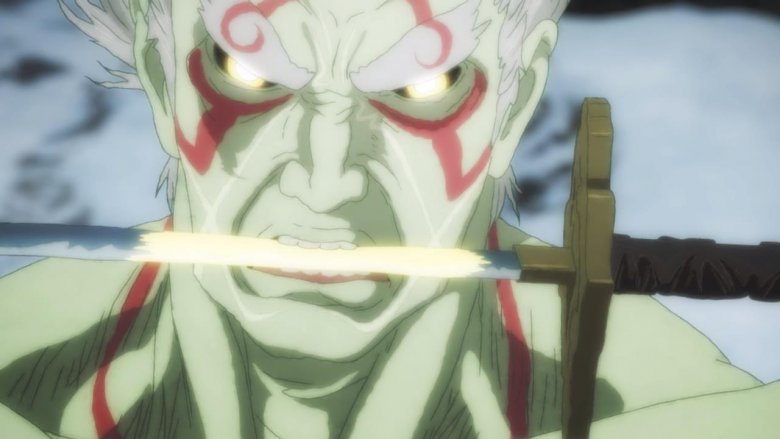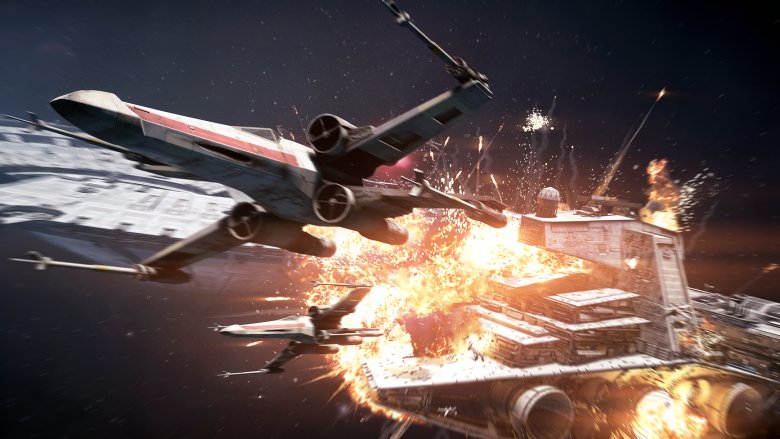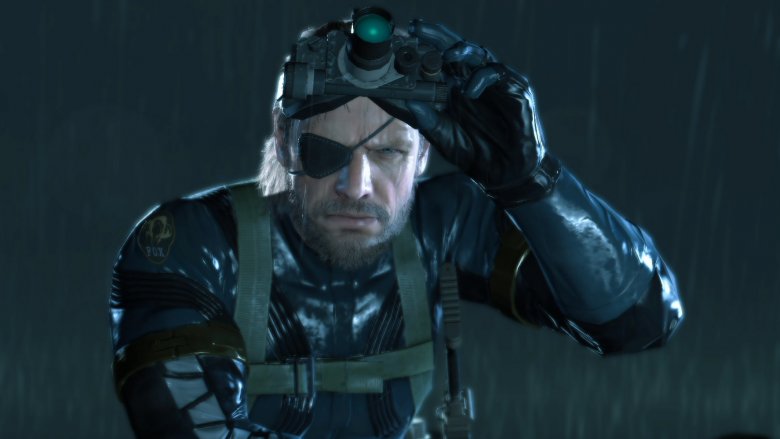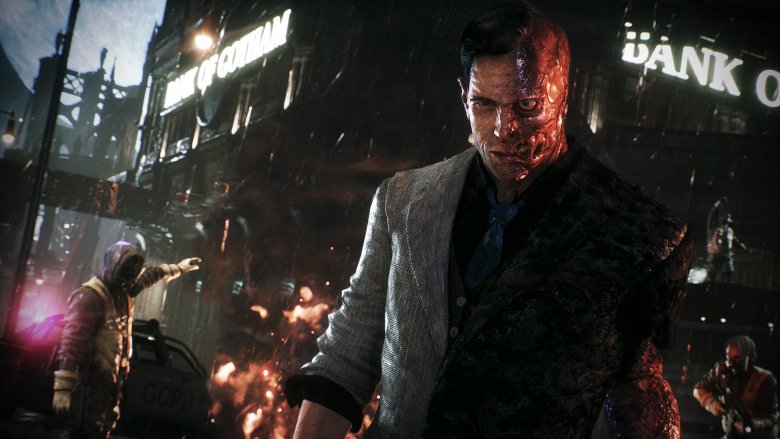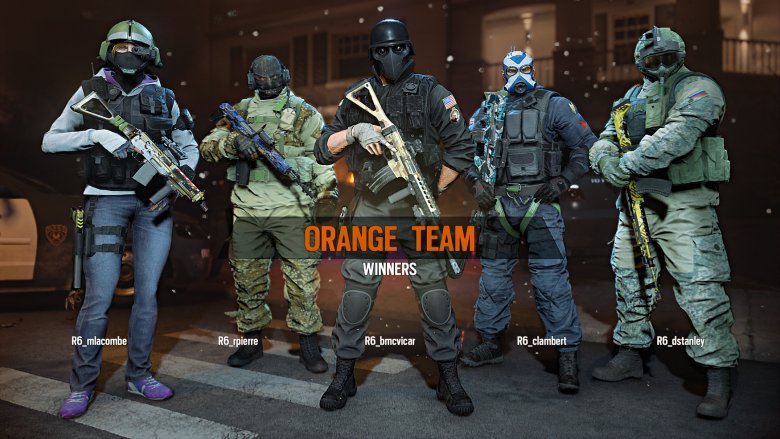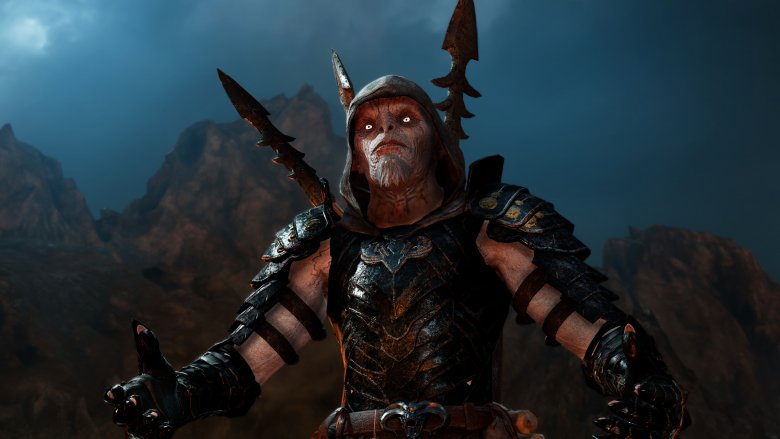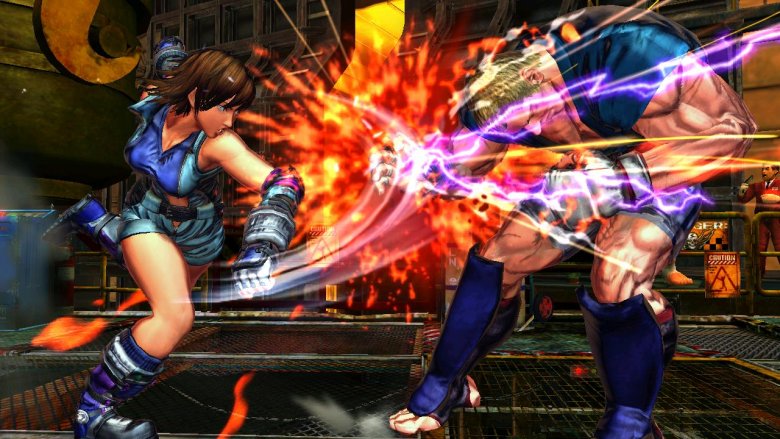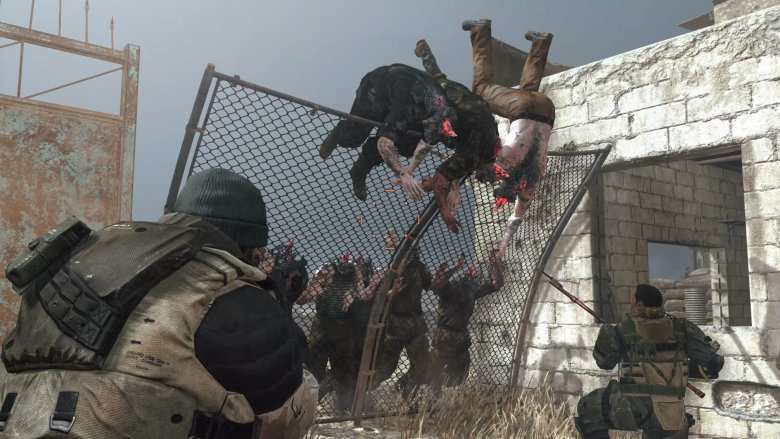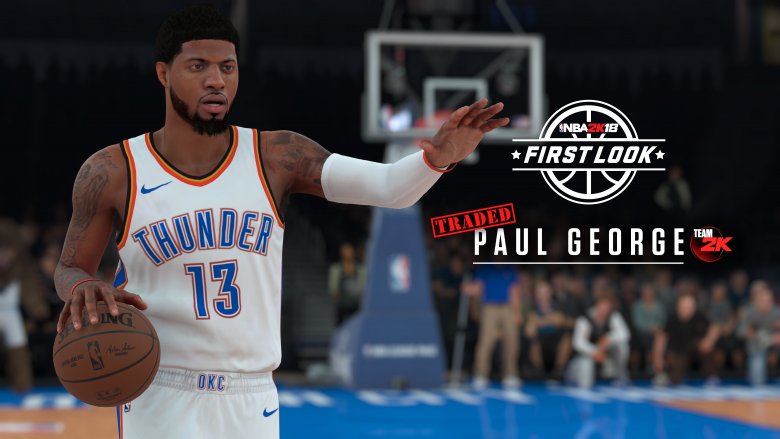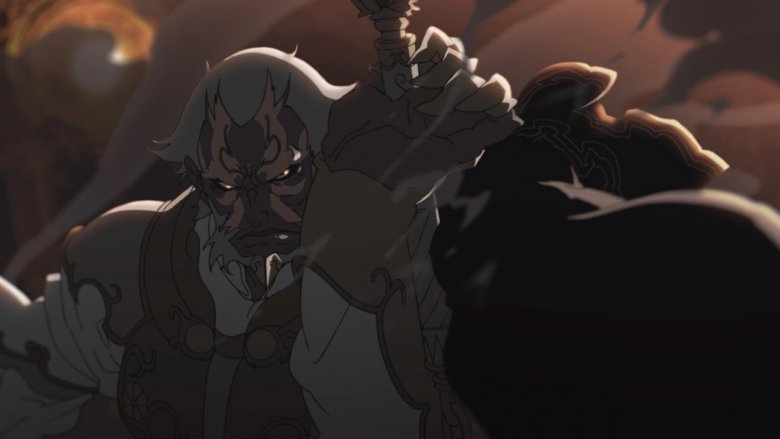Games That Rip Gamers Off Big Time
It's not exactly news to anybody, but gamers like to play games. Oftentimes, game developers like to play games too — so much that they spend their careers wrestling with the nuances of design. But the studios themselves? They're not here for the games: they're here for the money. Many industry executives may not even touch video games. And, hey: fair enough. It's a job, there's money to be made, and somebody's got to figure out how to pay for development, right?
In the best-case scenario, a great game is matched with a great business model. Gamers feel they've received what they paid for, and everybody walks away happy. But on the flip side of that coin, sometimes a title will release that picks the player's pockets, and runs away to the bank. These aren't just cases where the game wasn't very good: these are intentional steps taken by the games industry to milk the consumer for every last penny, in exchange for...not much. Very often, this makes the game itself worse, even ruining what might otherwise have been a great experience.
Here's when the industry ripped off the people they're supposed to serve: the gamers.
Star Cards: Battlefront II – The Last Loot Box
When Electronic Arts announced they were resurrecting the Star Wars: Battlefront brand, they delighted fans around the world with the revelation that DICE would be developing it. DICE had created the Battlefield series that the original Battlefront games had copied in the first place, so expectations for the title were sky-high. Unfortunately, the 2015 Battlefront didn't quite measure up: too few maps and modes resulted in a game that felt too light.
So with 2017's Star Wars: Battlefront II, EA and DICE promised that they'd learned their lesson. More maps! More modes! A narrative single-player campaign! Surely, with the glorious Frostbite engine and DICE's shooter sensibilities, this would be the Star Wars FPS to rule them all.
And then the Star Cards happened. Just "loot boxes" by another name — purchasable collections of randomized power-ups and cosmetic upgrades — EA shoved most of the game's best gear into them. While technically a player could grind out these items over dozens of hours, anyone with deep pockets could effectively buy their way into top-tier status and lay waste to thriftier fans. Worse, the game's best heroes were made prohibitively difficult to grind for.
EA was forced to apologize and removed the ability to purchase Star Cards, but the damage to the overall design had been done. Even without money on the table, the game will always be split between the haves and have-nots of the best Cards.
Metal Gear Solid V snuck in a little too early
Anyone who's even glanced at the development history of 2015's Metal Gear Solid V knows that things did not go well. Creative differences between series mastermind Hideo Kojima (who is actually creative) and Konami executives (who are not) resulted in the latter firing the former, and significant cuts to the scope of the final game — which is, effectively, unfinished.
Part of that was because Metal Gear Solid V was an expensive endeavor by any metric. Konami was watching money fly out the door, while Kojima continued to delay the game's release again and again. So, desperate to claw some money back for their investment, Konami made a stunning decision: to release the opening chapter of the game as a standalone release in 2014 — about a year and a half before the full game would debut.
Metal Gear Solid V: Ground Zeroes is, on its own merits, a fantastic experience, with all of the drama, tension, and player freedom that the franchise is known for. The only problem? The entire thing is only about two hours long. And yet, Konami priced it at an astonishing forty bucks! As great as Ground Zeroes was, that price was highway robbery.
Total Warhammer thought it was worth more
Creative Assembly's Total War franchise is a well-established and highly-regarded strategy/tactics hybrid. Games Workshop's Warhammer was a seminal stalwart of the tabletop miniature genre. But would the two mix together well? It could either be an amazing blend of two intellectual properties, or a total disaster. Fortunately for all involved, it was the former. Total War: Warhammer (which, let's be honest, we all call Total Warhammer) was a superlative entry in an already-great series, whether you consider that series to be TW or Warhammer.
So, great! What's the problem? Well, it arrived along with the game's inevitable DLC. Where other expansion packs for TW games cost $15, Total Warhammer's entered costing $19. Why? Well...because. Even though these DLC packs weren't any larger than other games', they were just more expensive. Games Workshop is legendary for upcharging based on the strength of their IP, so this might have been the good old Games Workshop tax. Or maybe it was Creative Assembly realizing they could do the exact same thing. The content drops themselves aren't bad by any stretch. Just overpriced.
Batman: Arkham Knight forgot to, you know, work
In fairness to the corporate executives, the gaming fanbase can be an ungrateful lot. They'll claim that games should be cheaper, yet demand better graphics and bigger worlds, and also want them released immediately. Plus, there are pirates in the internet seas. Let's face it, gamers: sometimes we're greedy, too. In many cases, we ask for just too much.
Like for our games to actually work.
Imagine Warner Bros.' horror when they found out that paying customers wanted a functioning product. When Batman: Arkham Knight, which had been a huge hit on consoles, released on PC, it was a broken mess. Buggy and riddled with framerate drops, it was like some insane clown's take on what a Batman game should be. Even after Warner Bros. attempts to fix it, the game still just didn't work.
For whatever reason, Warner Bros. Interactive simply chose to pull the game from stores rather than patch it again. That, in itself, made the entire affair a huge waste of players' time and expectations. WBI did offer refunds, but they were not given automatically (each customer had to apply for one), and they were only for Steam purchases: anybody who bought, say, a physical copy from a store was out of luck.
Does anybody else hear insane clown laughter?
Destiny fractured its audience
Destiny was the smash hit follow-up to the Halo series from developer Bungie, a sprawling blend of MMO and shooter sensibilities. The hype around the game propelled it to commercial success, as it became the fastest-selling new IP in gaming history. Like other MMOs, Bungie fully intended to support the game by adding new content over time, such as locations and gear. But unlike an MMO, Destiny did not charge a subscription fee. So how could Bungie afford to make all that new content?
Easy: by charging for it a la carte. Whether you want to call them DLC or expansion packs, the first two content drops, called The Dark Below and House of Wolves, came within a few months of the initial game's release. However, Bungie then built a lot of their high-level weekly challenges around them, which splintered Destiny's audience into pieces. If you wanted to participate in Destiny's endgame, you had to purchase the expansions, effectively pushing casual players out of the community.
For hardcore fans who were already planning to buy everything, this wasn't such a big deal. But for anybody who just wanted to enjoy Bungie's new game, they were effectively being handed an ultimatum: pay up, or get out. What a rip.
Rainbow Six: Siege gave away hard work for free
Tom Clancy's Rainbow Six: Siege from Ubisoft has been one of the quiet success stories of the last couple of years. After a relatively soft launch, the title has grown into one of the most-beloved team shooters in the world. Taut, tight, and tactical, Siege offers a more strategic and deliberately-paced alternative to the market's traditionally twitchy affairs. Players pick from a roster of characters called operatives, and, like a lot of such games, they're not all available at once. Only by playing and winning matches can players earn enough Renown to unlock new operatives. To get the entire roster, dozens of hours of time, and gallons of sweat, were required.
Until March of 2018, that is. That's when Ubisoft decided to bring the basic version of the game up to date by unlocking all of the original 20 operators, for free, to everyone. Great! Free stuff! Well, great if you haven't already spent all of that time and effort getting them.
Effectively, Ubisoft was now giving away what a lot of players had striven for. Ubisoft didn't offer any kind of compensation or in-game reward for those who had unlocked these characters the old-fashioned way. All players are equal, but some are more equal than others — Ubisoft, however, treated them all equally anyway. For the true die-hards who'd spent their free time getting those operators, "equal" just wasn't fair.
No Man's Sky assumed you had an infinite, procedurally-generated wallet
No Man's Sky was the surprise of the VGX Awards in 2013, an indie title made by a small team that had massive, galaxy-sized ambitions. This was a procedurally-generated game that would be filled with hundreds of worlds, each one unique and distinct, effectively meaning that every copy of the game was a bold new universe. The hype machine kicked into full gear, and No Man's Sky became one of the most anticipated games of its time.
The game finally launched on August 9, 2016. And to the surprise of many, the little indie game arrived with quite the price-tag: a full $60, equivalent to a AAA blockbuster, as opposed to the standard indie rate of around $10 to $20. For that kind of money, developer/publisher Hello Games was effectively telling the world that No Man's Sky would be as high-quality and long-lasting as any other game on the market, be it The Witcher III or Call of Duty.
Unfortunately, the game simply wasn't received that way. While free post-release content updates have improved the experience a lot, No Man's Sky continues to carry a $60 price even years after it came out. Perhaps for those who truly love the game, it's worth it. But for everyone else, it's just not justified.
Curiosity was the definition of "overpromise"
Game developer Peter Molyneux has made lots of high-profile games over the years, from Populous to Fable. He tends to think big, and talk even bigger. As you'd imagine, that lands him into trouble sometimes. So when he left Microsoft's Lionhead Studios to go indie, did he learn his lesson, curtail his expectations, and announce plausible goals?
No! What kind of fun would that be?
Instead, Molyneux released Curiosity — What's Inside the Cube?, a mobile game that was...a cube. Really. Like an ultra-minimalist take on Minecraft, Curiosity featured a giant cube made up of smaller cubelets. If a player tapped a cubelet, it disappeared. The goal? Get to the center. Simple.
What made it more interesting was that Curiosity was massively multiplayer, so everyone picked away at the same cube. It was essentially a race to get to the center first. Fair enough. But then the promises came in: the center of the cube was a prize, and more precisely, a life-changing prize. Whoever reached it first wouldn't be the same person afterwards. Amazing! Incredible!
Fake.
The eventual winner, Bryan Henderson, has yet to see his life transform. The "life-changing" prize turned out to be a promise to be made a god character in Molyneux's next game, Godus, who would get to influence timed multiplayer events and even get a cut of the revenue. Henderson has done precisely none of that, which means the entire point of Curiosity was a sham.
Middle-Earth: Shadow of War had too many orcs
Orcs! They're the worst.
They're ugly, they smell, they don't practice good labor standards, and by golly, they never met a fight they didn't like. Small wonder they were the antagonists in the 2014 hit Middle-Earth: Shadow of Mordor (not to mention in The Lord of the Rings, too). But for the 2017 sequel, Shadow of War, orcs became both foe and friend: hero Talion was able to recruit entire armies of them for a massive civil war in the evil land of Mordor.
In a very real sense, this army-building was the central gameplay hook of Shadow of War. The player had to acquire competent leaders, put them into the right positions in the army hierarchy, then hope they didn't die during the game's many sieges. Each orc had a unique personality, traits, and even a kind of narrative based on the unfolding gameplay experiences. Far from faceless adversaries, the orcs became your friends, your pals, and the very reason to play the game.
Which was the addition of a microtransaction system just ruined it. Instead of taking the time to recruit and bond with orcs, players with deep pockets could just fork over cash and buy the leaders they needed. This wasn't a band of brothers: this was a mercenary squad going to the highest bidder. The practice poisoned the gameplay loop, which was why Warner Bros. Interactive eventually removed microtransactions altogether. WBI's quest for a quick buck ended up screwing players over. Surprise.
Street Fighter X Tekken X The Disc
DLC has been with us since the mid-2000s: while it takes different forms, it's always some kind of additional content for a base game that costs an additional charge. In the best cases, this can take the form of a major expansion adding lots of new story. In the worst cases, it's horse armor. But, usually, it's a map pack.
One thing that's remained the same, however, is the acronym: DLC stands for downloadable content. Well, this was one area where developer Capcom decided to innovate. Who needs downloadable content when you could have disc-loaded content? Okay, they never actually used that term. But that was basically what they did with Street Fighter X Tekken, when they revealed that the first DLC drop for the game was already on the disc.
Needless to say, people were not happy. They'd just paid full price for the disc, only to find that, really, they were only paying for part of the disc. To get the whole disc, they'd have to shell out even more money. The backlash was fierce, and this disc-LC system is not used by anybody these days.
Diablo III let you pay for the whole point of the game
Diablo III was the 2012 entry in Blizzard's legendary action-RPG series, a fast-paced yet strategic blend of combat and exploration. But for all the spells and monsters, the game is really only about one thing: loot. You kill monsters to get loot. You explore caverns to get loot. You get loot so your character is strong enough to go get loot. Did we mention the loot?
So it came as a bit of a surprise to learn that this central gameplay hook was, on release, a purchasable commodity. The game came with not one, but two separate Auction Houses, one for in-game currency and one for actual, crisp, foldable real-world currency. What was getting auctioned in these houses? You guessed it: loot — as in, the reason to play the game. If you wanted to get the best gear, you could either spend lots and lots of hours playing, or you could just buy it on the market.
But that killed the community's urge to actually, you know, play. What was worse, this meant that to get the best gear, your best bet was to spend money, which made the whole game feel like more of a racket. The situation got so dire that eventually, Blizzard righted their wrong and pulled the system altogether.
DayZ still hasn't had its sunriZe
One of the major trends of the last few years has been the idea of games releasing way before they're actually, y'know, done. "Early access" allows developers to earn money during development, while also letting players have some input into said development. Additionally, this can be a way to build buzz in the community without having to spend money on marketing. In the best case scenario, a small game from a small team can explode from nothing to biggest game in the world using nothing but an early access program.
But there be dragons in early access: namely, it might stay early, forever. Many such games simply cease development at some point, often with no warning or explanation (let alone refunds). While there have been a lot of these cases over the years, none is so big or so prominent as DayZ. The game is a persistent online survival experience set against the backdrop of a zombie apocalypse. Players must work together, or against each other, to scrounge for supplies and make it through the day without starving or becoming zombie-food.
The game became extremely popular, but it forgot to do one thing: finish development. Years after it first hit early access, fans are still receiving promises that it's coming out. Really! Maybe. As it stands, a whole lot of players have paid good money for what amounted to an eternal beta. Almost like the developers became zombies themselves, who, to our knowledge, do not know how to code.
Metal Gear Survive featured a lot of microtransa[the rest of this sentence costs $5]
Metal Gear Survive was facing headwinds long before it actually released. For one thing, it smelled a bit funny to make a game about zombies in the Metal Gear universe. For another, well, it's a Metal Gear game without Hideo Kojima, which is not a sentence that should exist. To most outside observers, it seemed a whole lot like a soulless cash-grab on the part of publisher Konami, who fired Kojima in the first place.
And it was a soulless cash-grab, to a degree that shocked even wary fans. Even after paying (an admittedly discounted) $40, players found that simply creating a second character cost an additional $10 — one-quarter the cost of the entire game. Oh, did you want to save the progress of that second character you just paid for? That'll be another $10, please.
There's much more to complain about, but the rest of this article will cost you $20.
But no, Konami's right: this series will do just fine without Kojima. Just fine.
$10, please.
NBA 2K18 tuned its in-game currency all wrong
Sick of hearing about how microtransactions rip off gamers? Don't worry, there's more! In this case, however, it's more a case of fine-tuning, or lack thereof. In 2K's NBA 2K18, players can upgrade their character's stats and customize his appearance, just as in other RPG-sports games. All of this requires in-game currency, which can be earned simply by playing the game. For those with less patience, that in-game currency can be purchased with real-world money.
So far, so standard. Many other games have similar systems and are more or less fair in how they go about it. What 2K got wrong was in the balance of it all: how much in-game currency cost in real-world terms vs how much that in-game currency was worth in the game itself. Basically, to do anything in the game, players would have to spend money, and a good deal of it. Effectively, NBA 2K18 isn't a $60: that's just a teaser price for future purchases down the road.
But this is different than simple corporate greed, because...uh...we'll have to get back to you on that one.
Asura's Wrath made you pay for the end of the [pay here]
Asura's Wrath from developer CyberConnect2 is an interesting experiment in game design, more of an interactive TV show than a traditional video game. Players essentially take control during specific moments of an on-going cutscene, like getting to perform the actual fights in an anime show. Neat idea! Only one problem: everybody agreed that the ending sucked.
But have no fear! For soon, CyberConnect2 returned to say that that wasn't the real ending! The true finale would be arriving soon, all for the low, low price of $7. That's right: for more money, the developers would actually, you know, finish the game. Thanks! Absolutely no rip-off here. Nope. To be fair, outlets like Kotaku wondered if this might not be more of a face-saving move: since nobody liked the first ending, they were now providing fans an alternate. But recall that in the infamous case of Mass Effect 3, the revised ending DLC was given away for free by way of an apology.
[Hello, this is Metal Gear Survive again. Another $10, please.]

